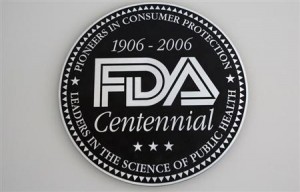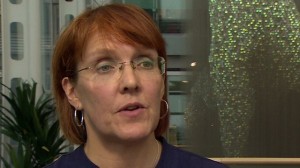 Sarepta Therapeutics Inc lost more than 60 percent of its market value after it was advised by the U.S. health regulator to find new ways to test its flagship treatment for a rare muscle disorder.
Sarepta Therapeutics Inc lost more than 60 percent of its market value after it was advised by the U.S. health regulator to find new ways to test its flagship treatment for a rare muscle disorder.
The U.S. Food and Drug Administration (FDA), citing new data and the failed trial of a competing drug, said the design and goals of Sarepta’s current trial might not be sufficient to win marketing approval for its drug.
Sarepta’s shares fell 62 percent, wiping more than $750 million off the company’s market value and making the stock the biggest percentage loser on the Nasdaq on Tuesday afternoon. At least three brokerages downgraded the stock.
“Everything I thought could have gone wrong has gone wrong – and then more stuff has gone wrong,” said Chad Messer, an analyst at investment banking and asset management firm Needham & Co, who downgraded Sarepta’s stock to “hold” from “buy”.
Sarepta is developing the drug, eteplirsen, as a treatment for Duchenne muscular dystrophy (DMD), a degenerative disorder that hampers muscle movement and affects one in 3,600 newborn boys.
Investors had been betting on a breakthrough.
Before Tuesday’s fall, Sarepta’s stock had more than doubled since October 2012, when data from a mid-stage trial showed that eteplirsen significantly improved walking ability in DMD patients.
But the FDA has now suggested that eteplirsen be tested against a placebo in a new, and potentially larger, trial, Sarepta said on Tuesday.
A placebo-controlled trial, it said, would be better than current trials in removing bias in walking ability that might be susceptible to individual effort or patient care.
“…It seems worthwhile to consider selection of other endpoints and/or populations for the next trial of eteplirsen,” Sarepta said it was told by the FDA in a meeting last week.
In its remarks, the FDA cited the recent failure of the trial of a rival drug, drisapersen, being developed by GlaxoSmithKline and Prosensa Holding NV.
That drug, like eteplirsen, works by increasing the production of a protein called dystrophin, the lack of which is the chief cause of DMD.
It failed to show a statistically significant improvement in the distance that DMD patients could walk in six minutes compared with placebo in a late-stage trial in September.
Prosensa’s shares, which had lost about 85 percent of their value since the announcement of drisapersen’s trial failure, were up 19 percent on Tuesday.
DOWNGRADES
Sarepta, previously known as AVI Biopharma, has gone more than three decades without bringing a drug to market. Analysts had previously said that they expected the company to ask for eteplirsen’s approval to be accelerated.
Sarepta said the FDA request would delay the initiation of dosing in a confirmatory study until at least the second quarter of 2014. A follow-up meeting with the regulator to discuss the confirmatory study design is scheduled this month.
“The likelihood of an accelerated approval at this point is very low. It seems like a long shot to me that the FDA is going to reverse position,” said Edward Tenthoff, analyst at Piper Jaffray.
Tenthoff, who cut his price target on the stock to $20 from $58, said he expected the FDA to require a confirmatory study with a two-year follow-up, which could delay the potential approval of eteplirsen to late 2017 or early 2018.
Both Tenthoff and Needham & Co’s Messer said the FDA and Sarepta would probably need to agree a new endpoint for trials, given the regulator’s concerns about the six-minute-walk trial.
“They thought they will be able to file early on limited data,” said Messer. “The FDA is not only saying forget about that, they probably also cannot do a full filing, and now it’s even questionable as to what the next study has to look like.”
Janney Capital Markets also downgraded Sarepta’s stock to “sell” from “neutral,” while Leerink Swann cut its price target to $17 from $44.
Sarepta’s shares were down 62 percent at $14.06 in early afternoon trading.
Source: Reuters


 New mothers are to be offered up to £200 in shopping vouchers to encourage them to breastfeed their babies.
New mothers are to be offered up to £200 in shopping vouchers to encourage them to breastfeed their babies.


 For people trying to wade though nutrition labels and choose healthy options, a front-of-package food label that boils down nutrition information to a single “score” may be the most user-friendly approach, a new study suggests.
For people trying to wade though nutrition labels and choose healthy options, a front-of-package food label that boils down nutrition information to a single “score” may be the most user-friendly approach, a new study suggests.



 What is the link between diabetes (both type 1 and type 2) and bone mineral density/osteoporosis in postmenopausal women?
What is the link between diabetes (both type 1 and type 2) and bone mineral density/osteoporosis in postmenopausal women?